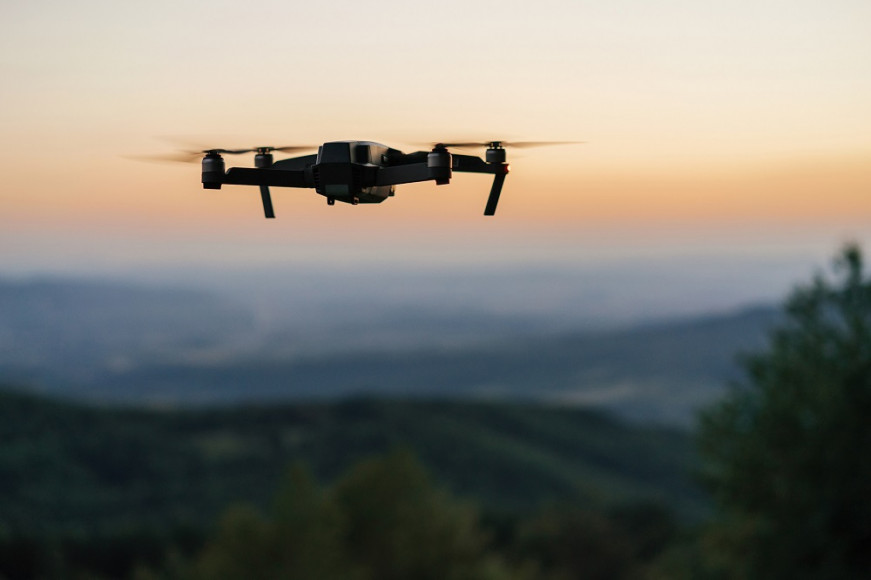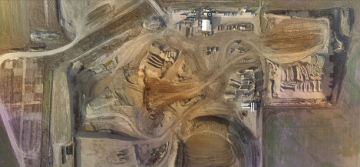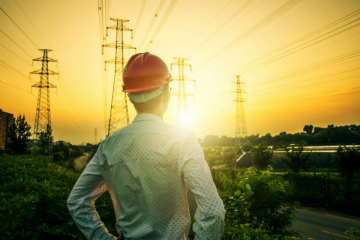Imagine being able to monitor terrain struck by a disaster without having to be at ground zero. What if you could reduce human risk by remotely conducting potentially hazardous inspections? It's possible, and drones are leading the way.
Technology is always evolving, and now drones are one of the next big things. Not only can they be used for personal photo and video taking, but they can also be used professionally in a variety of industries from entertainment to archaeology.
Thanks to sophisticated advances in drone technology, these unmanned aerial vehicles (UAVs) are vital tools within the full scope of Environmental Health and Safety (EHS) solutions as well. Here we’ll explore how drones in environmental consulting help EHS professionals safely undertake site investigation and remediation.
What is Investigation and Remediation?
The process of investigation and remediation involves site analysis, and removal of pollutants and contamination from surface water, groundwater, and soil.
Investigation and remediation services include steps such as:
- Soil, groundwater, and surface water investigations (Phase I and Phase II)
- Development of Conceptual Site Models and remediation strategies
- Human and Environmental Risk Assessments
- Innovative Remedial Design
- Implementation, optimization, and monitoring of on-site remediation systems
- Waste disposal, including hazardous waste
Drone Technology That Powers EHS
The technology powering today’s most sophisticated drones is making them an invaluable part of EHS work.
LiDAR
Light Detection and Ranging (LiDAR) drone flight has fast become a tool with a thousand uses.
This technology is similar to sonar in how it works, measuring the time it takes for the laser light to bounce off a target. These measurements are compiled and used to create a precise 3D model of an object or area.
A significant benefit of LiDAR is its ability to collect data beyond a canopy of trees or other concealing plant species. This is especially useful when trying to get an accurate assessment of ground formations or detect concealed objects.
Drone-mounted LiDAR is a more affordable, more accessible solution than gathering LiDAR data using planes, helicopters, or satellites.
Other Specialized Sensors
Certain sensors detect airborne particulate matter and analyze concentrations of pollutants as part of environmental monitoring. Thermal sensors capture temperature information. Hyperspectral sensors gather information from across the electromagnetic spectrum.
Each of these specialized sensors can be used in any number of applications, including EHS remediation.
Artificial Intelligence
Artificial intelligence (AI) is the brain that powers today’s cutting-edge drones. AI allows drones to fly in complex situations and emergency responses such as inside buildings, and stitch images together to form comprehensive 3D models and orthomosaic maps. This process is made faster and more effective through technologies like AI.
AI also powers the drone’s recognition capabilities, enabling object inventory and change alerts for site monitoring.
Drones in Remediation
Drones are being deployed to assist with remediation in a number of ways, reducing risk of exposure to hazardous situations.
Investigation and Remediation
Some ways drones are being put to use for investigation and remediation include:
- Site mapping - Drones are being used to create accurate, detailed, and high resolution site maps, as well as to measure and map facilities.
- Watershed mapping - Using LiDAR, thermal mapping, and other sensors, drones can map watersheds and determine routes water takes within the affected zone.
- Aerosol distribution - Using those specialized sensors mentioned above, drones can sense concentrations of CO2, CO, NH3, SO2, PM, O3 and NO2.
- Water pollution - Other specialized sensors can detect seepage from holding tanks or determine if groundwater is infiltrating surface water near a polluted site.
- Plant health - Image processing outputs compare different light bands in the RGB-captured image. This method uses Visible Atmospheric Resistant Index (VARI) to give visual indications of plant health and is intended for agricultural use.
- Difficult inspections - Quick, inexpensive, remote access inspections for objects large enough to be identified in photos and videos. Drones are capable of accessing difficult areas or areas that introduce a hazard for human access.
- Volume estimation - Produce estimates for soil management, volume capacities for catchment like features, volume of excavation materials.
- Leak detection - Routine real-time aerial images and videos can capture images of leaks or unauthorized activities near critical infrastructure, often in remote areas not visible from the ground.
- Remediation monitoring - Once remediation is underway, drones can monitor remediation efforts and measure zones subject to contaminant removal, among many other uses.
- Contour mapping - Survey impassable areas via drone flights, offering high-resolution, sub-foot contour lines, and signficantly reduce mapping and monitoring time.
Pilots Matter
While technology has expanded what we are capable of learning in the field of EHS remediation, the human factor makes a difference in how data is gathered and extrapolated.
Drone pilots who are also engineers or technicians with experience in the field of EHS remediation or related work have years of experience knowing what to look for in situations where high-quality drone services have replaced feet-on-the-ground (or, in some cases, seats in the air).
Where Can You Learn More About Drone Technology for Your Business?
So, where do you even begin with using an aerial system like drones for EHS? Check out the full blog here including how to start this journey from Inogen Alliance, a global network of EHS&S consultants of which Antea Group is a founding member.
Companies are turning to more sophisticated drone technology to help with EHS investigation, remediation, and more. For more information on how drones are becoming more important in EHS, check out our blog post here. Leveraging drones and unmanned aerial vehicles (UAVs) for EHS investigation and remediation can help you in numerous ways, and from AI to LiDAR, there are more technology options than ever.
If you want to learn more about using drones in your business, check out our drone and UVA services at Antea Group here.
Want more news and insights like this?
Sign up for our monthly e-newsletter, The New Leaf. Our goal is to keep you updated, educated, and even a bit entertained as it relates to all things EHS and sustainability.
Have any questions?
Contact us and schedule a time to meet at the event.








